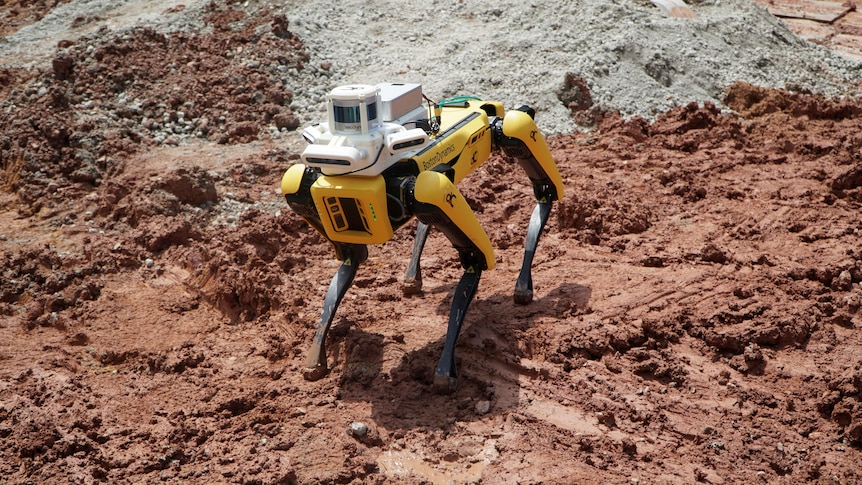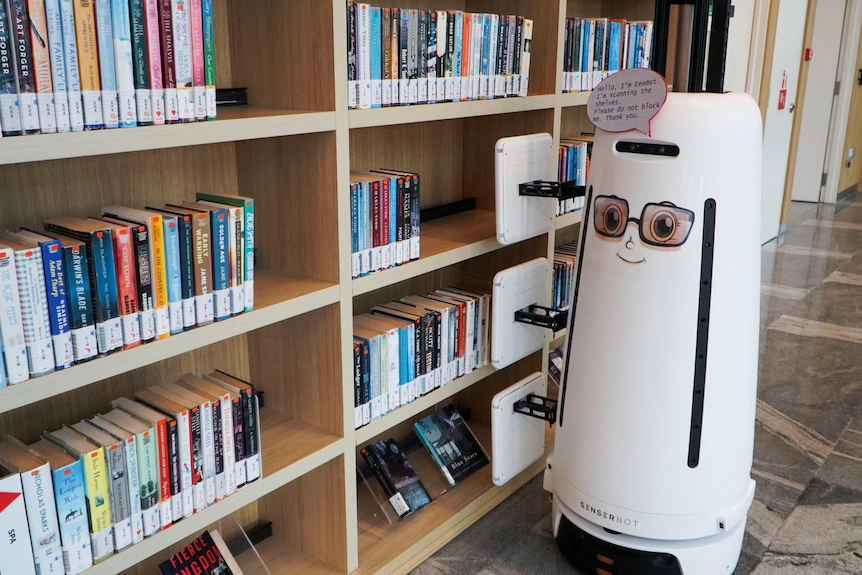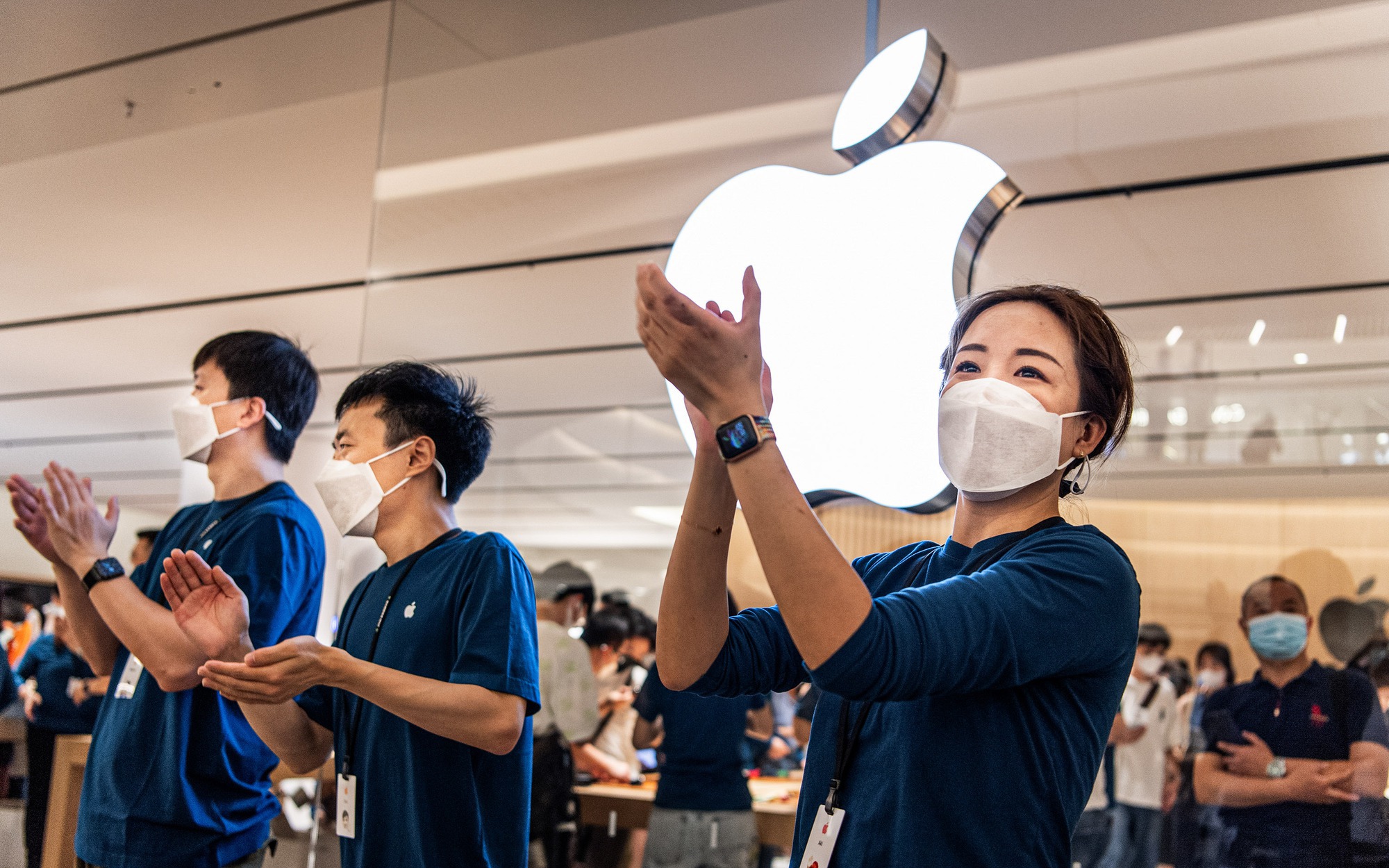Singapore’s robotic workforce fills the labor gap
After struggling to find staff during the pandemic, businesses in Singapore are increasingly turning to robots to help with a range of tasks, from surveying construction sites to scanning library shelves.
According to Singapore’s Ministry of Manpower, the island nation is dependent on foreign workers, but their numbers fell by 235,700 between December 2019 and September 2021, where it must also be noted that measures How COVID-19 restrictions have accelerated the “speed of technology adoption and automation” by companies.
At a construction site in Singapore, a four-legged robot called “Spot”, made by US company Boston Dynamics, scans sections of mud and gravel to check the progress of the work, with the data sent to the room. controller of the construction company Gammon.

A robotic dog named Spot surveys the ground at a construction site in Singapore. Photo: @Reuters/Travis Teo.
Gammon’s general manager, Michael O’Connell, said using Spot required only one employee instead of the former needing two to do the job manually.
“Replacing the need for on-site manpower with automated solutions is gaining real traction,” said O’Connell, who believes labor shortages in the industry are exacerbated by The pandemic is still here.
Meanwhile, the National Library of Singapore has introduced two shelf reading robots that can scan labels on 100,000 books, or about 30% of the library’s book collection, per day.
“Employees don’t have to read every single issue on the bookshelf, as it takes a lot of effort and time,” said Lee Yee Fuang, assistant director at the National Library Board.
Currently, Singapore has 605 robots installed to support operations and 10,000 employees in the manufacturing industry, the second-highest number globally, behind South Korea’s 932, according to a 2021 report by the National Federation of Robots. economic.
Robots are also being used for customer-facing tasks, with more than 30 metro stations set to have robots making coffee for commuters.
Keith Tan, chief executive officer of Crown Digital, the company that created the barista robot, says it is helping to solve the “biggest hitch” in the food and beverage industry, which is finding employees. .
However, some users who try the service still crave human interaction. “We’ve always wanted a little bit of a human,” said Ashish Kumar, a commuter, sipping a drink made by the robot.
Not even mentioning Nadine, a friendly robot receptionist working at Nanyang Technological University (NTU). The lifelike brown-haired robot, created by scientists at NTU, is developed using intelligent software similar to Apple’s Siri or Microsoft’s Cortana.
The 1.7m tall Nadine was designed to resemble the ‘younger’ doppelgänger of Professor Thalman, one of its creators. She possesses a good memory and has a distinct personality, mood, and emotions. Not only will she greet visitors, smile, make eye contact, and shake hands, but she will also be able to remember your name, and your previous conversation with her the next time you see her.

A book-scanning robot used by the National Library Council of Singapore. Photo: @Reuters/ Travis Teo.
Disruptive Technology: Artificial Intelligence (AI) – Will Robots Take Over Our Jobs?
Artificial intelligence (AI) is a field of computer science that imbues intelligent human behaviors such as visual perception, speech recognition, decision making, and translation between languages to perform tasks. Services are usually performed by humans.
Artificial intelligence (AI) applications are currently used in many fields, including computing, science, healthcare, finance, security, advertising, telecommunications, transportation, and automotive. , and is “one of the biggest technological shifts happening in the industry,” said Frank Chen, a partner at venture capital firm Andreessen Horowitz in Silicon Valley.
“In the long run, I think we’ll move in computing from the most advanced world of mobile to the cutting edge of AI,” said Sundar Pichai, CEO of Google Inc.
Over the past five years, America’s tech powerhouses such as Google, Twitter, Salesforce, Apple, Intel, Yahoo, IBM, and AOL have bought nearly 30 AI startups, five of which occurred last year. 2016, CB Insights said.
Imminent AI trends and the rise of robotics will cause times of uncertainty and panic in the job market. As artificial intelligence continues to get smarter, social robots like Nadine are poised to replace humans and become receptionists or personal assistants for bosses, journalists and lawyers in offices Future.
Professor Thalmann, an expert in virtual people and a lecturer in NTU’s School of Computer Engineering, told Channel NewsAsia that robots can actually take on mundane tasks such as reception, cleaning cleaners or drivers (as in self-driving cars) in the next 10 years.
On the bright side, a humanoid robot with enhanced senses, dexterity, and intelligence like Nadine could be used as a companion for lonely children and elderly people, especially dementia patients. intellectual impairment. As stated in the NTU press release, Professor Thalman said: “As countries worldwide face the challenges of aging populations, social robotics could be a solution to address them. shrinking workforce, becoming a personal companion for children and the elderly at home, and even a platform for future healthcare services.”
However, another report from Forrester Research in 2021 claims that, “intelligent agents and related robots” will wipe out 6% of jobs, causing disruption to things like customer service. shipping, marketing, logistics, transportation and automotive industries.
“In the following years, a disruptive tidal wave will begin and a larger shift of certain jobs will occur,” the report said.
However, Lim Say Leong, assistant vice president of marketing for Swiss automation giant ABB, said that companies should be better prepared for AI technologies, as this will bring. a future that is more productive and less labor intensive, saving the resources and time needed to produce high-quality goods. He also added that, robot can replace people in jobs that are considered dangerous and unsafe.
Indeed, a robotic future offers us countless benefits and opportunities, but it also raises another concern: Will our jobs be replaced by robots? In Mr. Lim’s view, robots may pose a threat to some countries, but not absolutely. Instead of stealing jobs, robots solve the hiring problem, and existing workers can be retrained to handle other, higher value-added jobs, he said.
at Blogtuan.info – Source: danviet.vn – Read the original article here



